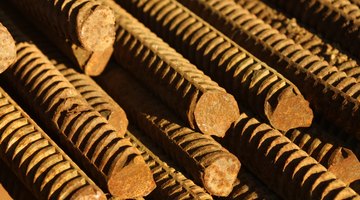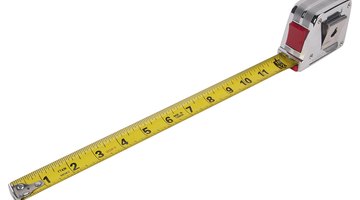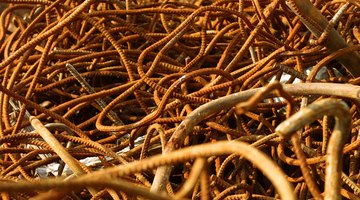How to Bend Rebar in a Circle
Rebar is short for reinforcing bar. It is a carbon steel bar used on construction projects to reinforce concrete. When you place rebar into concrete, it allows the concrete to carry higher tensile loads. The ridged areas of rebar allow it to connect to the concrete.

At home, you can use rebar for construction projects such as the form for a circular concrete pond. In this situation, you need to bend the rebar in a circle to allow it to support the entire concrete form of the pond.
-
Measure the perimeter of the circle that needs to be reinforced with rebar. Measure your rebar with chalk or a pencil. If you are using two pieces of rebar, divide this number in half.
-
Ask staff at a hardware store to cut the rebar for you. They have the correct equipment to do this safely and easily. Alternatively, use a chop saw with a metal cutting blade to cut the rebar to size. Wear safety goggles and gloves.
-
Set the rebar bender to 180 degrees. If you are bending rebar in a full circle, set the rebar bender as high as it can go. Some benders go over 180 degrees. Place the rebar into the feeding slot of the machine. Stand in a place that allows you to hold the rebar but gives you a good escape route should the rebar shatter.
-
Hold the rebar. Keep your hands free of the machine. Use the foot pedal to activate the bending process.
-
Remove the rebar from the machine. Check to make sure the rebar fits into the bend of the circle. If it does not, repeat the bending process until the rebar fits.


Things You Will Need
- Rebar
- Gloves
- Measuring tape
- Chalk
- Chop saw
- Eye protection
Tip
Determine whether you need to bend rebar in a full circle or whether two half circles of rebar will accomplish the same task. Rebar is prone to shattering the more it is bent, so it is safer to use two rebar arches rather than one rebar circle.
Writer Bio
Anise Hunter began writing in 2005, focusing on the environment, gardening, education and parenting. She has published in print and online for "Green Teacher," Justmeans and Neutral Existence. Hunter has a Bachelor of Arts in English from the University of British Columbia and a Master of Resource Management in environmental science from Simon Fraser University.
Photo Credits
- Photos.com/Photos.com/Getty Images
- Photos.com/Photos.com/Getty Images
- Hemera Technologies/PhotoObjects.net/Getty Images
- Photos.com/Photos.com/Getty Images
More Articles



